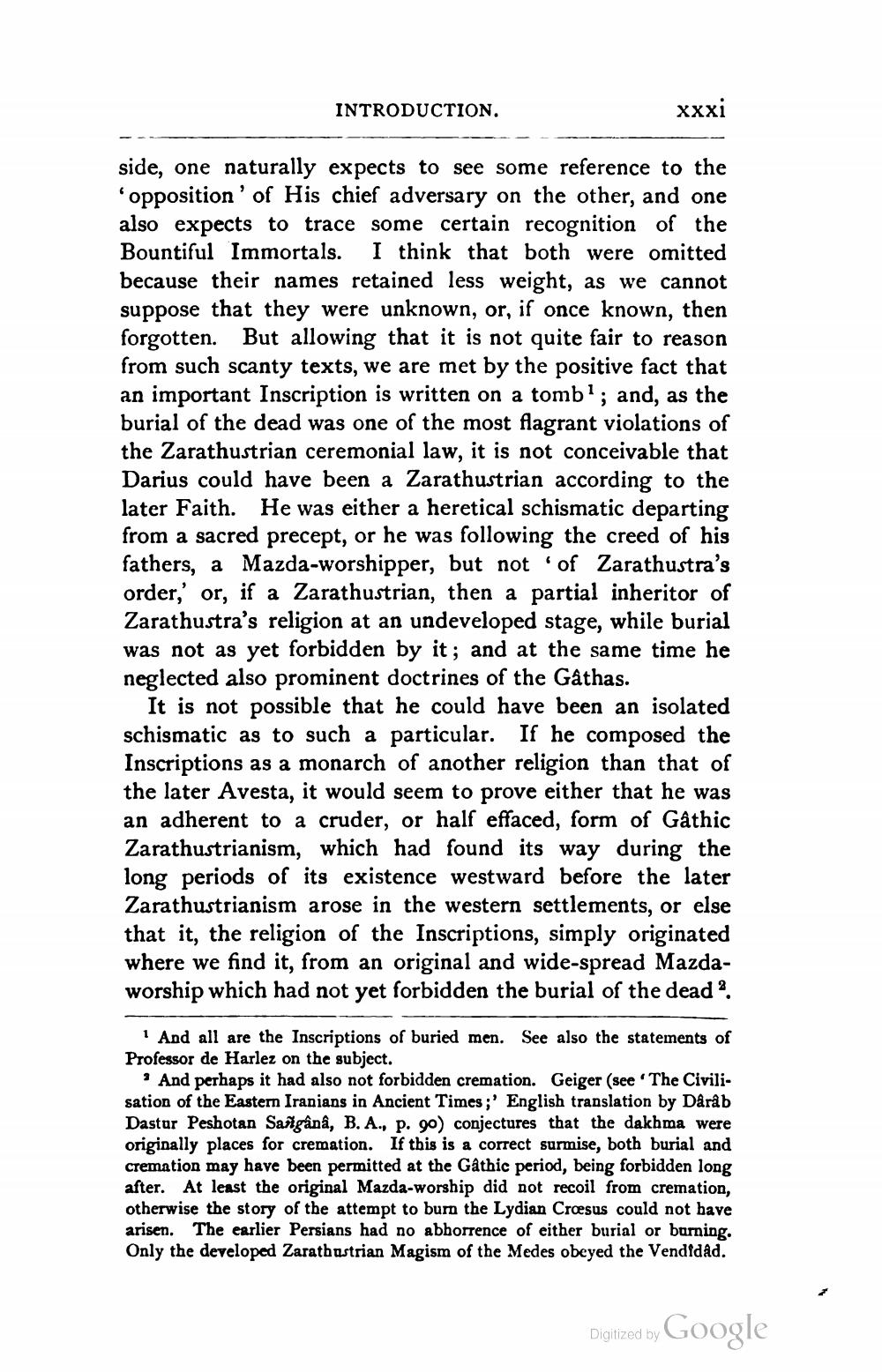________________
INTRODUCTION.
xxxi
side, one naturally expects to see some reference to the 'opposition of His chief adversary on the other, and one also expects to trace some certain recognition of the Bountiful Immortals. I think that both were omitted because their names retained less weight, as we cannot suppose that they were unknown, or, if once known, then forgotten. But allowing that it is not quite fair to reason from such scanty texts, we are met by the positive fact that an important Inscription is written on a tomb?; and, as the burial of the dead was one of the most flagrant violations of the Zarathustrian ceremonial law, it is not conceivable that Darius could have been a Zarathustrian according to the later Faith. He was either a heretical schismatic departing from a sacred precept, or he was following the creed of his fathers, a Mazda-worshipper, but not of Zarathustra's order,' or, if a Zarathustrian, then a partial inheritor of Zarathustra's religion at an undeveloped stage, while burial was not as yet forbidden by it; and at the same time he neglected also prominent doctrines of the Gathas.
It is not possible that he could have been an isolated schismatic as to such a particular. If he composed the Inscriptions as a monarch of another religion than that of the later Avesta, it would seem to prove either that he was an adherent to a cruder, or half effaced, form of Gâthic Zarathustrianism, which had found its way during the long periods of its existence westward before the later Zarathustrianism arose in the western settlements, or else that it, the religion of the Inscriptions, simply originated where we find it, from an original and wide-spread Mazdaworship which had not yet forbidden the burial of the dead .
1 And all are the Inscriptions of buried men. See also the statements of Professor de Harlez on the subject.
And perhaps it had also not forbidden cremation. Geiger (see 'The Civilisation of the Eastern Iranians in Ancient Times;' English translation by Darab Dastur Peshotan Sangânâ, B.A., p. 90) conjectures that the dakhma were originally places for cremation. If this is a correct surmise, both burial and cremation may have been permitted at the Gathic period, being forbidden long after. At least the original Mazda-worship did not recoil from cremation, otherwise the story of the attempt to bum the Lydian Cræsus could not have arisen. The earlier Persians had no abborrence of either burial or burning. Only the developed Zarathustrian Magism of the Medes obeyed the Vendidad.
Digitized by Google
Digitized by




